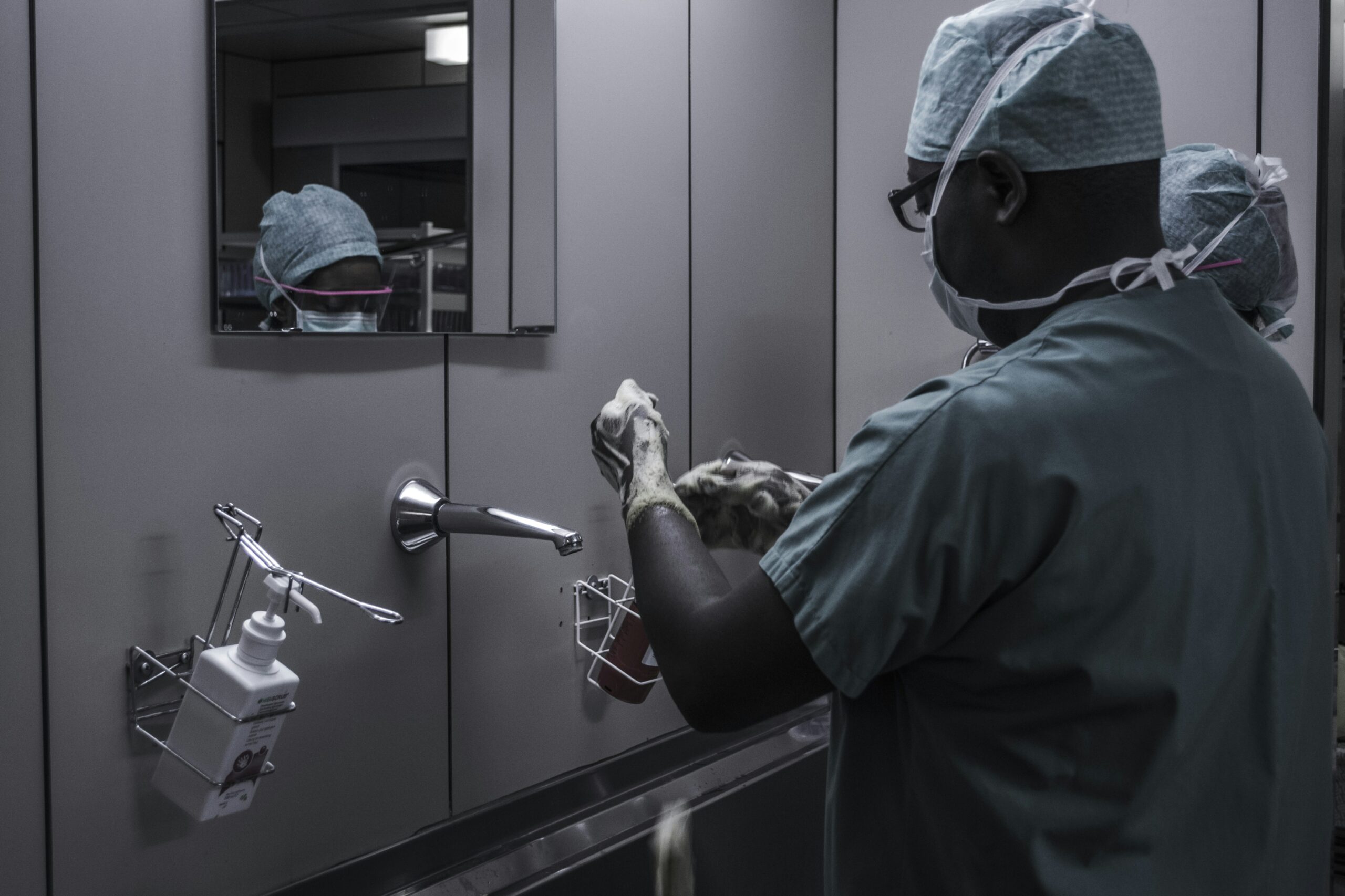In this article, we will take a closer look at the anatomical position of the prostate. Situated just below the bladder and in front of the rectum, the prostate is a small, walnut-sized gland that plays a crucial role in male reproductive health. Understanding its precise anatomical position is essential in grasping its functions and potential health concerns. So, let's explore the fascinating world of the prostate and uncover the secrets it beholds!

Understanding the Basic Anatomy of the Prostate
The prostate gland is a small, walnut-sized organ that is part of the male reproductive system. It is located just below the bladder and in front of the rectum. The prostate plays a crucial role in the production and delivery of semen during ejaculation.
Description of the prostate gland
The prostate gland is made up of several different types of tissues, including glandular tissue and muscle tissue. The glandular tissue is responsible for producing and secreting prostate fluid, which is an important component of semen. The muscle tissue helps to contract and release the semen during ejaculation. The prostate is surrounded by a fibrous capsule that helps to protect and support the gland.
Role and function of the prostate in the male reproductive system
The prostate gland plays a vital role in the male reproductive system. Its main function is to produce and store seminal fluid, which is mixed with sperm cells from the testes to form semen. The prostate fluid provides nourishment and protection for the sperm, helping them to survive and swim. During ejaculation, the muscle tissue in the prostate helps to propel the semen through the urethra and out of the penis.
Basic structure of the prostate
The prostate gland is divided into three main lobes – the anterior lobe, the central lobe, and the posterior lobe. The anterior lobe is the largest and makes up about 70% of the prostate. It is located towards the front of the gland and surrounds the urethra. The central lobe is located in the middle of the gland, while the posterior lobe is towards the back. Each lobe contains glands and ducts that produce and transport prostate fluid.

Position of the Prostate in Relation to Other Organs
Prostate location in relation to the bladder
The prostate gland is situated just below the bladder. It wraps around the base of the bladder and the beginning of the urethra, forming a donut-like shape. This close proximity allows the prostate to have a direct influence on the urine flow and the filling and emptying of the bladder. The position of the prostate in relation to the bladder also affects its accessibility for medical procedures.
Prostate location in relation to the rectum
The prostate gland is located in front of the rectum. The front wall of the rectum is separated from the back of the prostate gland by a thin layer of tissue called the recto-prostatic fascia. This close proximity to the rectum allows healthcare professionals to perform a digital rectal exam (DRE) to assess the size and texture of the prostate.
How the prostate surrounds the urethra
One of the unique features of the prostate gland is that it surrounds the urethra, which is the tube that carries urine from the bladder to the penis. The urethra passes through the prostate gland like a tunnel, allowing both urine and semen to pass through. This arrangement means that any changes or conditions that affect the prostate, such as enlargement or inflammation, can have a direct impact on urinary flow and function.
Visualization of the Prostate's Position
Medical imaging techniques used to visualize the prostate
There are several medical imaging techniques that can be used to visualize the position and structure of the prostate gland. These include transrectal ultrasound (TRUS), magnetic resonance imaging (MRI), and computed tomography (CT) scans. TRUS involves the insertion of a small probe into the rectum to obtain images of the prostate. MRI and CT scans provide detailed cross-sectional images of the prostate and surrounding structures.
Discussions of common visual representations of the prostate’s position in textbooks and medical literature
When studying the anatomy and position of the prostate, common visual representations can be found in textbooks and medical literature. These illustrations often show the prostate gland as a distinct structure located just below the bladder and in front of the rectum. They may also depict the urethra passing through the prostate. These visual representations help healthcare professionals and students understand the relationship between the prostate and other organs.

Accessing the Prostate for Medical Procedures
Common surgical approaches to the prostate
There are several surgical approaches to accessing the prostate for medical procedures. One common method is transurethral resection of the prostate (TURP), which involves removing prostate tissue through the urethra using a special instrument. Another approach is open prostatectomy, which requires making an incision in the lower abdomen to access and remove the prostate. Laparoscopic and robotic-assisted surgeries are less invasive methods that use small incisions and specialized tools to access the prostate.
How the position of the prostate influences surgical methods
The position of the prostate is an important factor in determining which surgical method is most appropriate. The size, location, and accessibility of the prostate can affect the surgeon's ability to perform the procedure safely and effectively. For example, if the prostate is located deep within the pelvis, a more invasive surgery may be required to access and remove it. The position of the prostate can also impact the recovery and potential complications of the surgical procedure.
Non-surgical methods of accessing the prostate
In addition to surgical approaches, there are non-surgical methods of accessing the prostate for medical procedures. These include transrectal needle biopsy, which involves using a needle to remove tissue samples from the prostate for examination. Another non-surgical approach is transurethral microwave therapy (TUMT), where heat is applied to the prostate through a catheter inserted into the urethra. These non-surgical methods provide less invasive options for diagnosing and treating prostate-related conditions.
Understanding Prostate Diseases
The impact of prostate position on certain prostate diseases
The position of the prostate can have an impact on the development and progression of certain prostate diseases. For example, an enlarged prostate, also known as benign prostatic hyperplasia (BPH), can obstruct the flow of urine due to its position around the urethra. Prostate cancer can also be influenced by the position of the prostate, as tumors that are located near the urethra or rectum may present different symptoms or require specific treatment approaches.
Common prostate diseases and conditions
There are several common prostate diseases and conditions that can affect the health and function of the prostate. These include BPH, prostate cancer, prostatitis (inflammation of the prostate), and prostate infections. BPH is particularly common in older men and can cause urinary symptoms such as frequent urination and difficulty emptying the bladder. Prostate cancer is the most common cancer in men and can range from slow-growing to aggressive forms.
How prostate diseases can affect its position and structure
Prostate diseases can also affect the position and structure of the prostate. For example, an enlarged prostate can cause the gland to push against the bladder or urethra, altering its position. Prostate cancer can cause the prostate to become irregularly shaped or invade surrounding tissues. In some cases, prostate diseases may cause inflammation or scarring, which can also impact the structure and function of the prostate gland.

Anatomical Variations in Prostate Placement
Discussion of possible variations in prostate position
While the general position of the prostate is consistent, there can be anatomical variations in its exact placement. The size, shape, and orientation of the prostate can differ slightly from person to person. Factors such as genetics, age, and health status may contribute to these variations. However, these anatomical variations rarely cause significant clinical implications, and the overall function of the prostate remains the same.
Effect of age and health status on prostate position
As men age, the prostate gland tends to enlarge, which can affect its position within the pelvis. This is a normal process known as BPH. Hormonal changes and other factors may contribute to the growth and displacement of the prostate over time. In certain health conditions, such as prostate cancer or severe inflammation, the size and position of the prostate may also be affected. However, these variations are typically managed through medical interventions and treatments.
Assessing the Prostate through Physical Examination
How the prostate is assessed during a digital rectal exam
A digital rectal exam (DRE) is a physical examination that allows healthcare professionals to assess the size, texture, and overall condition of the prostate. During a DRE, a gloved and lubricated finger is inserted into the rectum to feel the back of the prostate gland. The healthcare professional will assess for any abnormalities, such as lumps or changes in texture, that may indicate the presence of prostate diseases.
Limitations and advantages of the DRE based on the prostate's position
The position of the prostate can impact the accuracy and effectiveness of a DRE. If the prostate is located deeper within the pelvis or is small in size, it may be more challenging to assess during a DRE. Additionally, the position of the prostate in relation to the rectum can affect the tactile feedback experienced by the healthcare professional. However, the DRE remains a valuable tool in evaluating the prostate and is often combined with other diagnostic tests for a comprehensive assessment.

The correlation between Prostate Size and Position
Effects of an enlarged prostate on its position
An enlarged prostate, such as in cases of BPH, can cause the prostate gland to shift its position within the pelvis. The prostate may push against the bladder or urethra, leading to urinary symptoms and alterations in its position. The extent of the shift in position can vary depending on the size and location of the enlarged prostate. This can impact the diagnosis and treatment approach for managing the condition.
How prostate size might affect symptom presentation
The size of the prostate can also affect the presentation of symptoms related to prostate diseases. In cases of BPH, as the prostate enlarges, it may exert pressure on the bladder or urethra, causing urinary symptoms such as increased frequency, urgency, weak urine flow, or difficulty starting or stopping urination. The position and size of the prostate can influence the severity and specific nature of these urinary symptoms, helping healthcare professionals to determine the underlying cause.
Anatomical Implications on Prostate Cancer Treatment
Surgical implications of prostate position during prostate cancer treatment
The position of the prostate is a critical consideration during prostate cancer treatment, particularly surgical interventions. The surgical removal of the prostate, known as a prostatectomy, requires precise planning and execution to ensure the complete removal of cancerous tissue while preserving urinary and sexual function. The position and accessibility of the prostate can impact the surgical approach chosen and the potential complications associated with the procedure.
Role of prostate position in radiation therapy
Radiation therapy is a common treatment approach for prostate cancer. The position of the prostate is essential in delivering precise doses of radiation to the targeted area, while minimizing damage to surrounding healthy tissues. Specialized imaging techniques, such as CT scans and MRI, are used to precisely locate the prostate and guide the radiation therapy. The accurate knowledge of the prostate's position ensures that the radiation is effectively delivered to the tumor site.
Importance of prostate's position in brachytherapy
Brachytherapy is a form of radiation therapy where small radioactive seeds are implanted directly into the prostate gland. The position of the prostate is crucial in accurately placing these seeds to target the cancerous tissue. Imaging techniques, such as TRUS or MRI, are used to guide the precise placement of the seeds. The knowledge of the prostate's position and anatomical variations is crucial for planning and performing successful brachytherapy.
Comparing Prostate Position in Different Species
Position of the prostate in various mammals
The position of the prostate gland can vary among different species. In most mammals, including dogs and cats, the prostate is located near the urethra and plays a similar role in reproductive function. However, the precise position and size of the prostate can differ. For example, in some species, such as rodents, the prostate is relatively small and located more towards the bladder, while in larger mammals, like horses or whales, the prostate can be much larger and extend further into the pelvis.
Comparison of human prostate position to other animals
In comparison to other animals, the position of the prostate gland in humans is relatively consistent. The human prostate is located just below the bladder and in front of the rectum, surrounding the urethra. This anatomical position allows for its role in reproductive function and its potential impact on urinary flow. While there may be slight variations in size and shape among individuals, the overall position of the prostate in humans is similar.

